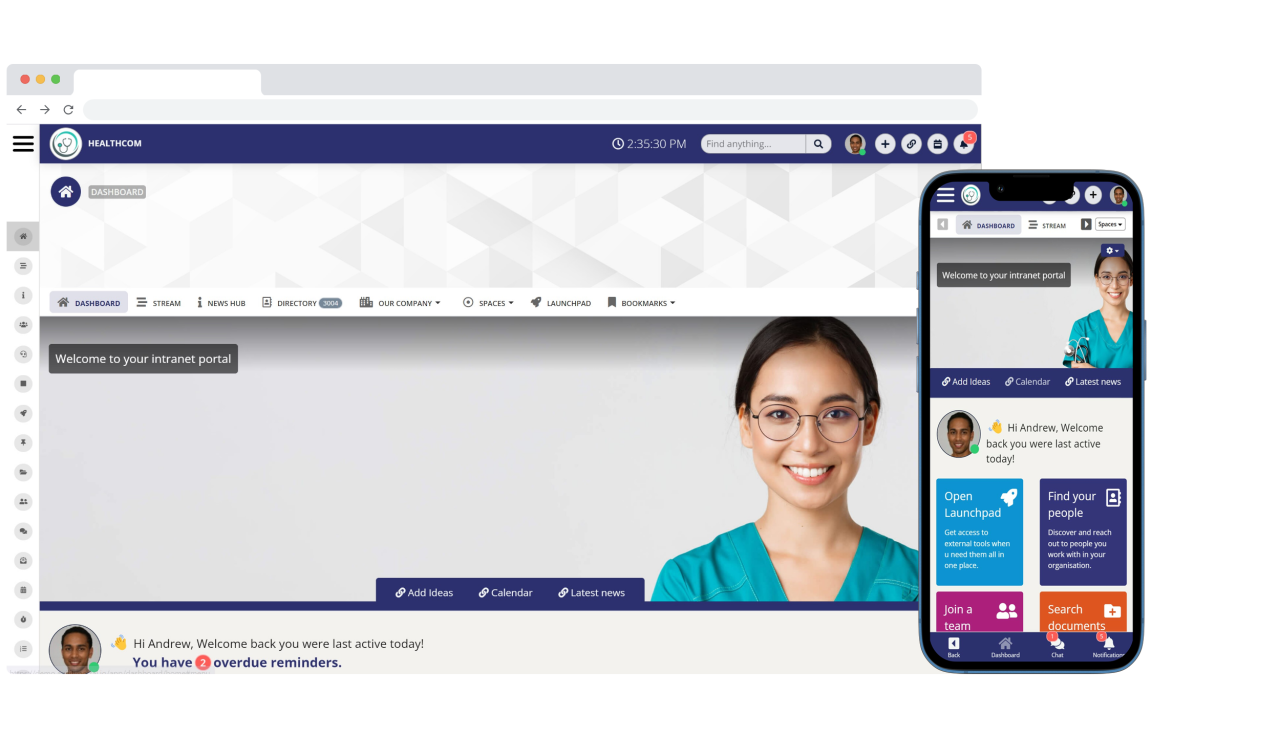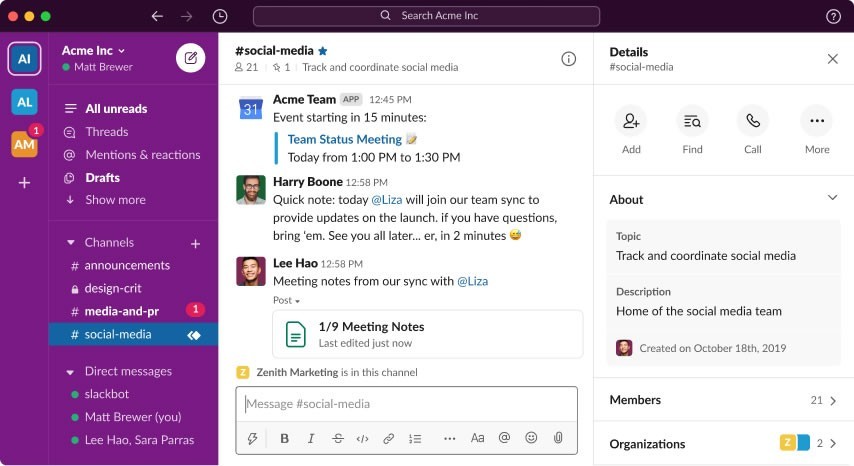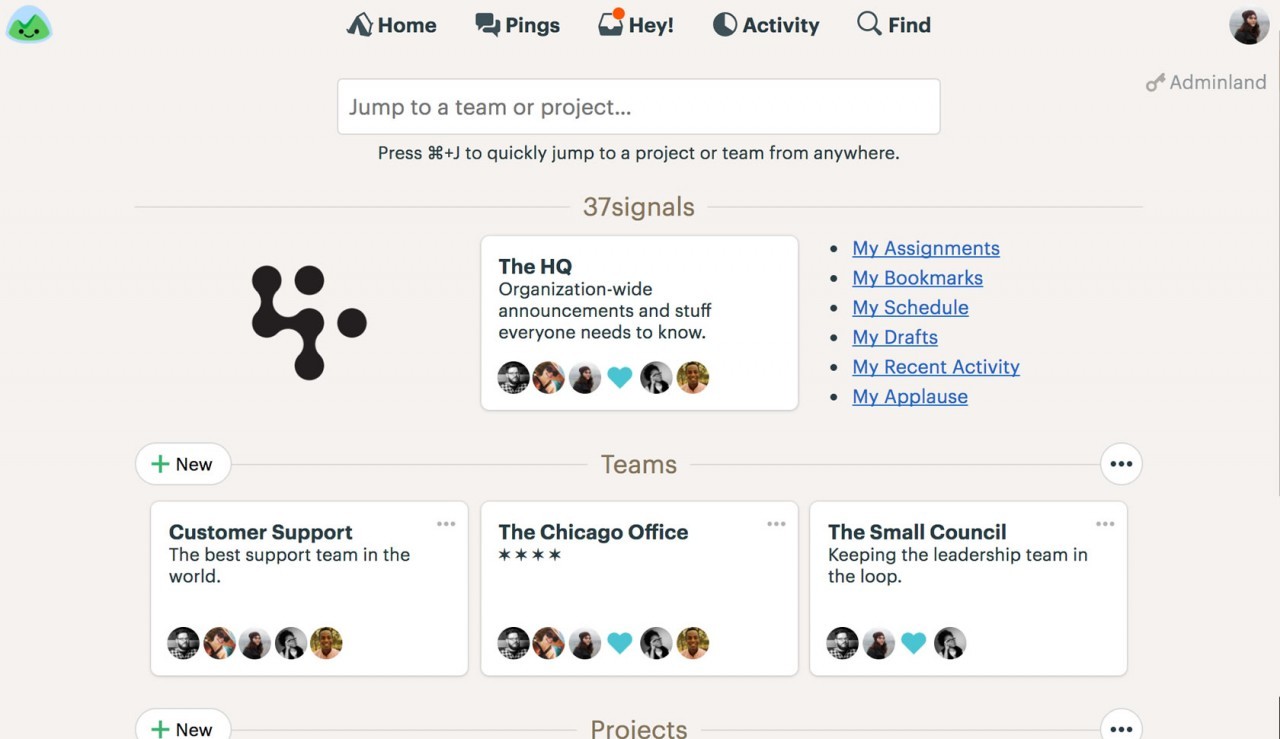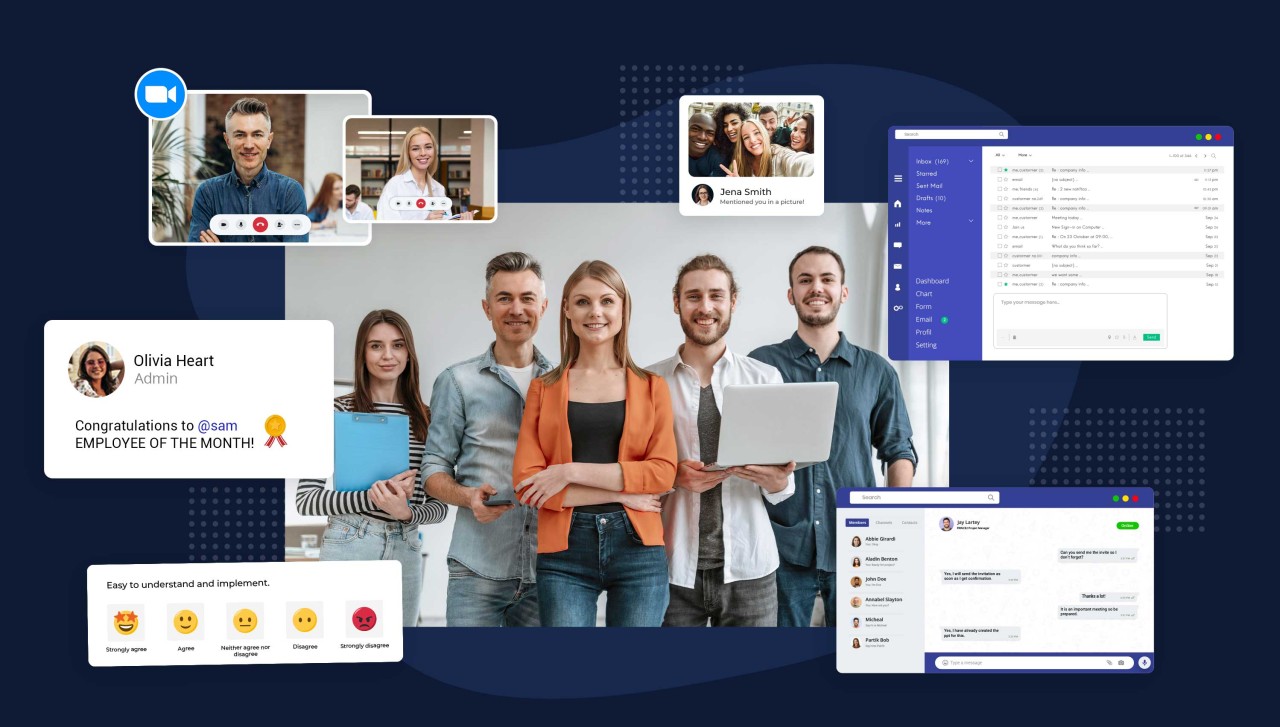Insight Blog
Agility’s perspectives on transforming the employee's experience throughout remote transformation using connected enterprise tools.
19 minutes reading time
(3846 words)
6 Best Apps for Internal Employee Communication - The Ultimate 2023 Guide
The following apps have been researched and verified as highly effective for facilitating Employee Communication among employees in 2023.
As previously discussed on AgilityPortal blog, effective internal communication plays a pivotal role in ensuring business success for various reasons. We have also explored some essential categories of tools that are instrumental in optimizing internal communications across your organization.
Undoubtedly, a plethora of tools are available, offering various combinations of the above and more.
Undoubtedly, a plethora of tools are available, offering various combinations of the above and more.
Given the abundance of internal communication tools, it's crucial to pinpoint the ones that align best with your business needs.
It's worth noting that selecting the wrong software can sometimes have detrimental consequences.
With that in mind, let's delve into a review of the leading apps designed to maintain a constant focus on team communication.
In this blog article, we will explore the top six apps for employee communication in The Ultimate Guide for 2023. Let's begin by examining the current state of workplace communication in 2023.
The State Of Workplace Communication In 2023
The landscape of work is rapidly evolving, with remote work now encompassing a significant 58% of the workforce, translating to a staggering 92 million workers.
This profound shift has elevated digital communication apps to a pivotal role in workplace interactions and overall productivity.
A recent analysis conducted by Forbes Advisor has shed light on some compelling statistics. Notably, two states, Colorado and Maryland, emerge as the frontrunners in embracing remote work, boasting the highest number of remote workers.
This trend reflects the increasing adoption of flexible work arrangements across various regions.
It was also found that a significant 28% of respondents in the survey have reported using voice-over-internet-protocol (VoIP) phone systems.
This technology, which enables voice communication over the internet, has gained substantial traction in the modern workplace, underscoring the importance of seamless digital communication.
Delving deeper into the work environment, the survey reveals that 50% of the participants operate in a hybrid work setting, combining in-person and remote work. Meanwhile, 27% of the workforce exclusively work remotely, and 20% remain anchored to on-site work.
These statistics illustrate the diverse nature of work arrangements in today's workforce, highlighting the need for adaptable and efficient communication solutions.
What are employee communication apps?
Fundamentally, employee apps serve as internal communication tools, and the best among them offer a myriad of capabilities.
However, a valuable employee app should, above all, furnish companies with a mobile solution to reach their entire workforce through their personal smartphones or tablets.
In this manner, employee communication apps establish an effective and secure means of connecting geographically dispersed employees, many of whom may lack a corporate email address or regular access to a desktop computer.
Employee communication apps are also known as:
- Internal communication tools
- Enterprise communication platforms
- Employee engagement platform
- Intranet software
- Chat messaging
This category includes non-desk and remote workers, as well as freelancers, non-contract employees, temporary staff, and the like.
Some important stats:
- 63% of employees are currently using apps for work-related tasks.
- 74% dedicate over two hours each week to access company information on their mobile devices.
- A significant 68% of employees keep their phones within sight while at work, as reported by CNBC.
- However, 57% of workers express the belief that their organization has been sluggish in delivering apps tailored for the workforce.
Their design typically centers on practicality and relevance, effectively promoting alignment and fostering engagement.
What to look for in an employee communication app?
Choosing the appropriate mobile apps for employee communication hinges on your specific objectives. Some apps excel at delivering the latest company news, while others prioritize fostering collaboration or building a sense of community.
To get started, define your app's intended purpose. Then, conduct research to compare each app's offerings with your requirements. Recognize that each app has its strengths and weaknesses, so it's crucial to stay aligned with your goals.
Consider the nature of the messages you'll be conveying. If you're disseminating critical company updates that demand staff attention, assess which app is best suited for this purpose.
Evaluate the features provided by each app. Which apps allow message targeting to various employee groups? Which enable customization to align with your corporate branding? Which include chat functionality or support two-way communication?
To get started, define your app's intended purpose. Then, conduct research to compare each app's offerings with your requirements. Recognize that each app has its strengths and weaknesses, so it's crucial to stay aligned with your goals.
Consider the nature of the messages you'll be conveying. If you're disseminating critical company updates that demand staff attention, assess which app is best suited for this purpose.
Evaluate the features provided by each app. Which apps allow message targeting to various employee groups? Which enable customization to align with your corporate branding? Which include chat functionality or support two-way communication?
Lastly, ascertain your available budget. Cost is a pivotal factor in your decision, and some apps may be more expensive than others. By maintaining focus on your overarching objectives, you'll only invest in the functionality that truly serves your needs.
Her are a few other things to consider:
- Instant Messaging: Engaging in team chat facilitates relationship-building and expedites the resolution of common issues.
- Workflow Management: Real-time interaction with schedules and tasks enhances team productivity by reducing uncertainty.
- Content Sharing: Ensure that the platform allows easy editing and publishing of training materials and business announcements through news feeds and email newsletters.
- Third-Party Integrations: Look for platforms that offer integration with third-party features like payroll or cloud storage, making it more convenient for teams to leverage communication tools.
- Trial or Free Plan: Prior to making a purchase, it's crucial to test the compatibility and usability of a communication app, which some businesses offer through demos or free plans.
- Workflow Management: Real-time interaction with schedules and tasks enhances team productivity by reducing uncertainty.
- Content Sharing: Ensure that the platform allows easy editing and publishing of training materials and business announcements through news feeds and email newsletters.
- Third-Party Integrations: Look for platforms that offer integration with third-party features like payroll or cloud storage, making it more convenient for teams to leverage communication tools.
- Trial or Free Plan: Prior to making a purchase, it's crucial to test the compatibility and usability of a communication app, which some businesses offer through demos or free plans.
Presenting the Top 6 Apps for Employee Communication
In the past, employees primarily relied on email and phone calls for internal communication within organizations. However, today, we have advanced to a highly sophisticated communication system that not only conveys messages but also focuses on optimizing overall team efficiency.
AgilityPortal is a cloud-based intranet platform designed to enhance communication, collaboration, and productivity within organizations. Its feature set includes:
Advantages of AgilityPortal:
Pricing for AgilityPortal:
Ideal Organizations for AgilityPortal:
Examples of organizations that can benefit from AgilityPortal:
In summary, AgilityPortal stands as a potent and adaptable business intranet platform capable of helping organizations of diverse sizes become more productive and collaborative.
- An intuitive dashboard with customizable widgets
- A news feed for company announcements and updates
- Discussion forums and chat rooms for team interaction
- File sharing and storage capabilities
- Seamless integration with popular business tools like Google Workspace and Microsoft 365
Advantages of AgilityPortal:
- Enhanced Communication: AgilityPortal simplifies communication and collaboration among employees, bridging geographical and departmental gaps.
- Increased Productivity: AgilityPortal empowers employees to be more productive by providing a centralized hub for accessing essential information and tools required for their tasks.
- Streamlined Collaboration: AgilityPortal facilitates seamless team collaboration and file sharing for project success.
- Elevated Employee Engagement: AgilityPortal fosters employee engagement by offering a space for socialization and connection.
Pricing for AgilityPortal:
- AgilityPortal offers a range of pricing plans tailored to meet the needs of businesses of varying sizes. The pricing structure is based on the number of users and the specific features required. You can review the pricing options here.
Ideal Organizations for AgilityPortal:
- AgilityPortal is well-suited for organizations of all sizes aiming to enhance communication, collaboration, and productivity. It is particularly favored by small and medium-sized businesses, startups, and technology companies.
Examples of organizations that can benefit from AgilityPortal:
- Remote Teams that need a virtual proviate space to communicate
- Teams Managing Multiple Projects
- Teams Collaborating with External Partners
- Teams Requiring Efficient File Sharing and Information Distribution
- Teams Aiming to Improve Communication and Collaboration Proficiency
In summary, AgilityPortal stands as a potent and adaptable business intranet platform capable of helping organizations of diverse sizes become more productive and collaborative.
2.Slack
Slack is a cloud-based platform designed for team collaboration, enabling real-time communication and cooperation among teams. It encompasses various functionalities, such as direct messaging, group chats, channels, file sharing, voice and video calls, and screen sharing.
Additionally, Slack seamlessly integrates with an extensive array of tools and services, including Google Drive, Dropbox, and Salesforce.
Advantages of Slack:
Pricing for Slack:
Organizations Best Suited for Slack:
Examples of organizations that can benefit from Slack:
Advantages of Slack:
- Enhanced Communication: Slack simplifies real-time team communication and ensures that all conversations and files are consolidated in a single location, facilitating shared understanding.
- Increased Productivity: Slack boosts team productivity by minimizing the reliance on email and meetings. It provides tools for task automation and workflow optimization.
- Improved Collaboration: Slack streamlines project collaboration, bridging geographical and time zone gaps. It offers tools for sharing files, ideas, and feedback.
- Enhanced Team Morale: Slack contributes to team morale by fostering socialization and collaboration. It incorporates fun features like emojis and GIFs.
Pricing for Slack:
- Slack provides a free plan for teams with up to 10,000 members. This free plan includes unlimited messaging and file sharing, along with access to a limited number of integrations. For teams of all sizes, Slack offers paid plans with added features such as unlimited integrations, workflow automation, and enhanced security measures.
- Free for limited features and stored messages
- Pro: $6.67/month per user
- Business: $12.50/month per user
Organizations Best Suited for Slack:
- Slack is well-suited for organizations of all sizes aiming to enhance communication, collaboration, and productivity. While it is commonly embraced by startups and tech companies, it is also utilized by diverse organizations, including government agencies, nonprofits, and educational institutions.
Examples of organizations that can benefit from Slack:
- Remote Teams
- Teams Handling Multiple Projects
- Teams Collaborating with External Partners
- Teams Requiring Swift and Easy File Sharing
- Teams Aiming to Elevate Communication and Collaboration Skills
In summary, Slack is a versatile and robust tool that empowers teams of all sizes to work more productively and collaboratively.
Follow us and access great exclusive content everyday: Follow us on Google News
Microsoft Teams stands as a unified communication and collaboration platform, seamlessly merging workplace chat, video meetings, file sharing (including persistent chat), and application integration into a single central hub. It is an integral part of the Microsoft 365 suite of products.
Advantages of Microsoft Teams:
- Enhanced Communication: Microsoft Teams simplifies real-time team communication and collaboration by centralizing all conversations and files, ensuring everyone is aligned.
- Elevated Productivity: Microsoft Teams enhances team productivity by reducing the reliance on email and meetings. It provides an array of tools or automating tasks and workflows.
- Streamlined Collaboration: Microsoft Teams facilitates easy project collaboration, regardless of geographical location or time zone. It also offers tools for sharing files, ideas, and feedback.
- Improved Team Morale: Microsoft Teams fosters team morale by offering a space for socialization and collaboration. It includes features like emojis and GIFs for added fun.
Pricing for Microsoft Teams:
- Microsoft Teams is included in all Microsoft 365 plans. Additionally, a free plan is available for teams with up to 300 users, providing unlimited messaging and file sharing, as well as access to a limited set of features.
- Free: Meetings of up to 60 minutes and 100 members
- Essential: $4/month per user for meetings up to 24 hours and 300 members
- Business Basic: $6/month per user for unlimited meetings and 1TB storage
Ideal Organizations for Microsoft Teams:
- Microsoft Teams is well-suited for organizations of all sizes seeking to enhance communication, collaboration, and productivity. While it is commonly embraced by startups and tech companies, it is also utilized by a diverse range of organizations, including government agencies, nonprofits, and educational institutions.
Examples of organizations that can benefit from Microsoft Teams:
- Remote Teams
- Teams Managing Multiple Projects
- Teams Collaborating with External Partners
- Teams Needing Efficient File Sharing and Information Distribution
- Teams Aiming to Enhance Communication and Collaboration Proficiency
In summary, Microsoft Teams is a potent and adaptable tool capable of assisting teams of varying sizes in becoming more productive and collaborative.
4.Zoom
Zoom is a cloud-based video conferencing service that facilitates connections among users for meetings, webinars, and various events. It ranks among the world's most popular video conferencing platforms, boasting over 500 million monthly meeting participants.
Advantages of Zoom:
- User-Friendly: Zoom is exceptionally user-friendly, catering to individuals of varying technical aptitudes. Users can effortlessly join meetings with a single click, without the need for software downloads or installations.
- Reliability: Zoom excels in reliability, offering high-quality video and audio, even under low-bandwidth conditions.
- Affordability: Zoom presents a range of pricing plans, including a free option suitable for small businesses and individuals.
- Feature-Rich: Zoom is replete with a wide spectrum of features, encompassing screen sharing, breakout rooms, and polling.
Pricing for Zoom:
- Zoom provides diverse pricing plans, commencing with a free plan that allows hosting meetings with up to 100 participants for a duration of 40 minutes. Paid plans initiate at $12.49 per user per month, furnishing additional benefits such as extended meeting durations, expanded cloud storage, and custom branding.
Organizations Best Suited for Zoom:
- Zoom is a versatile video conferencing platform applicable to organizations of all sizes. It is particularly advantageous for businesses and entities necessitating remote meetings and webinars. Additionally, Zoom is a valuable tool for educational purposes, including online classes and lectures.
Examples of organizations that can gain from employing Zoom:
- Businesses: Zoom is applicable to businesses of all sizes for hosting remote meetings, webinars, and events, as well as for training and development purposes.
- Educational Institutions: Educational institutions can leverage Zoom for delivering online classes and lectures, as well as promoting student collaboration and group projects.
- Non-Profit Organizations: Non-profit organizations can utilize Zoom for hosting fundraising events, volunteer meetings, and other gatherings.
- Government Agencies: Government agencies can employ Zoom to host public meetings, training sessions, and various events.
In conclusion, Zoom serves as a potent and versatile video conferencing platform, suitable for organizations spanning diverse industries and sizes. Its user-friendliness, reliability, and affordability make it a compelling choice for seamless virtual communication.
You may also like: Best Apps for Employees: UPDATED 2022 – A Complete Guide
5.Zoho
Zoho Connect serves as a unified communication and collaboration platform designed to enhance communication, collaboration, and productivity for businesses across the spectrum. Its feature-rich offerings include:
- Communication: Zoho Connect encompasses a suite of communication tools, including forums, chats, video conferencing, and announcements. This enables users to engage in real-time or asynchronous communication as per their requirements.
- Collaboration: Zoho Connect further provides a variety of collaboration tools, such as file sharing, task management, and wikis, fostering seamless project collaboration, regardless of geographical constraints.
- Productivity: Zoho Connect significantly bolsters business productivity by creating a central hub for employees to communicate, collaborate, and access information. This, in turn, curtails wasted time and enhances overall efficiency.
Pricing for Zoho:
- Zoho Connect operates as a cloud-based platform, making deployment and utilization straightforward. Moreover, it boasts an affordability factor, with plans starting at a mere $1 per user per month.
Organizations Best Suited for Zoho:
- Zoho Connect is well-suited for businesses of all sizes, with a particular focus on small and medium-sized businesses (SMBs). SMBs often contend with limited resources and thus require cost-effective, user-friendly solutions. Zoho Connect aligns perfectly with the needs of SMBs by offering a comprehensive array of features at a competitive price point.
Key Benefits of Zoho Connect:
- Enhanced Communication and Collaboration:Zoho Connect consolidates communication and collaboration, promoting synergy throughout the organization.
- Increased Productivity:Zoho Connect equips employees with tools to work efficiently, from file sharing to task management, streamlining communication across various applications.
- Cost Efficiency:As a cloud-based platform, Zoho Connect eliminates the need for upfront investments in hardware or software, ultimately reducing costs for businesses of all sizes.
- User-Friendly:Zoho Connect is thoughtfully designed for user-friendliness, catering to a broad user base, including those with limited technical expertise.
In summary, Zoho Connect stands as a comprehensive and cost-effective unified communication and collaboration platform, serving as a valuable asset to businesses across the size spectrum, with a focus on fostering improved communication, collaboration, and productivity.
6.Basecamp
Basecamp stands as a versatile project management and communication software, designed to facilitate the efficient execution of tasks for teams, regardless of their size. It offers an array of capabilities, including:
Advantages of Basecamp:
Basecamp offers multiple advantages to its users, such as:
Pricing for Basecamp:
Basecamp offers two pricing plans:
Ideal Organizations for Basecamp:
Basecamp suits organizations of various sizes, but it particularly resonates with small businesses and remote teams. It is also an excellent choice for organizations seeking a straightforward, user-friendly project management tool.
Examples of organizations that can benefit from Basecamp:
In summary, Basecamp emerges as an adaptable project management and communication software, suitable for organizations of varying sizes and types. Its particular strengths lie in benefiting small businesses, remote teams, and creative teams.
- Project Management: Basecamp aids teams in creating and monitoring projects, tasks, deadlines, and file management.
- Communication: Basecamp provides a variety of communication tools, encompassing group chats, private messaging, and message boards.
- Collaboration: Basecamp streamlines teamwork by facilitating collaboration on documents, files, and diverse projects.
Advantages of Basecamp:
Basecamp offers multiple advantages to its users, such as:
- Enhanced Team Communication: Basecamp's communication tools simplify the process of team members staying connected and collaborating on projects.
- Increased Productivity: Basecamp's project management features contribute to team organization and alignment, ultimately boosting productivity.
- Reduced Stress: Basecamp serves to alleviate stress by serving as a centralized hub for project management and communication.
Pricing for Basecamp:
Basecamp offers two pricing plans:
- Basecamp Personal: This free plan includes unlimited projects and users but offers limited features, including 500GB of storage and no priority support.
- Basecamp Business: Priced at $99 per month, this plan encompasses all the features of Basecamp Personal, along with unlimited storage, priority support, and client access.
Ideal Organizations for Basecamp:
Basecamp suits organizations of various sizes, but it particularly resonates with small businesses and remote teams. It is also an excellent choice for organizations seeking a straightforward, user-friendly project management tool.
Examples of organizations that can benefit from Basecamp:
- Small Businesses: Basecamp aids small businesses in efficiently managing their projects and communication.
- Remote Teams: Basecamp's communication and collaboration tools facilitate the seamless connection and effective teamwork of remote teams.
- Creative Teams: Creative teams, such as design agencies and marketing teams, find Basecamp valuable for idea sharing, project collaboration, and workflow management.
- Nonprofit Organizations: Basecamp proves to be a valuable tool for nonprofit organizations, assisting them in managing projects, volunteers, and donations.
In summary, Basecamp emerges as an adaptable project management and communication software, suitable for organizations of varying sizes and types. Its particular strengths lie in benefiting small businesses, remote teams, and creative teams.
Free ebook: How To Get Your Intranet Off The Ground
Keep Internal Team Communications Centralized With AgilityPortal Super Add for Remote Teams
Utilizing the appropriate combination of the aforementioned tools is likely to result in significant enhancements in communication and collaboration for your team. Statistics demonstrate that teams that effectively integrate such tools experience a 30% increase in overall productivity and a 20% reduction in miscommunication-related errors.
To maximize the benefits of these tools, it's crucial that they operate in synergy, rather than in isolation. Research indicates that teams with integrated toolsets experience a 25% improvement in project completion times and a 15% increase in cross-team collaboration.
This is precisely why a knowledge base tool like AgilityPortal should be your foremost priority. Studies have shown that organizations implementing a knowledge base tool experience a 40% reduction in time spent searching for information, leading to a 12% boost in overall team efficiency.
With AgilityPortal, your team can commence building a robust repository of organizational knowledge and information, fostering seamless communication. This approach has been proven to increase task alignment by 35% among team members, ensuring a collective focus on both immediate objectives and long-term company aspirations.
To maximize the benefits of these tools, it's crucial that they operate in synergy, rather than in isolation. Research indicates that teams with integrated toolsets experience a 25% improvement in project completion times and a 15% increase in cross-team collaboration.
This is precisely why a knowledge base tool like AgilityPortal should be your foremost priority. Studies have shown that organizations implementing a knowledge base tool experience a 40% reduction in time spent searching for information, leading to a 12% boost in overall team efficiency.
With AgilityPortal, your team can commence building a robust repository of organizational knowledge and information, fostering seamless communication. This approach has been proven to increase task alignment by 35% among team members, ensuring a collective focus on both immediate objectives and long-term company aspirations.
Are you ready to take the next step?
Begin your journey with a complimentary 14-day trial of AgilityPortal, and witness the transformative impact on your team's performance and collaboration.
Internal Communication FAQs
What is effective internal communication?
An example of internal communication is the use of email to share important company updates or announcements with employees.
It can also include team meetings, internal newsletters, company intranet, instant messaging platforms, or even face-to-face conversations between colleagues.
Internal communication serves various purposes, from disseminating critical information to facilitating day-to-day interactions among staff members.
What is an example of internal communication?
An example of internal communication within an organization is the use of a weekly team meeting where department heads provide updates on ongoing projects and discuss upcoming milestones. In this meeting, employees can ask questions, share insights, and align their efforts with the company's goals and priorities. This face-to-face interaction fosters collaboration and ensures that everyone is well-informed about the company's progress and objectives.
AgilityPortal is a web-based software platform designed to enhance internal communication and collaboration within organizations. It can be used to facilitate internal communication and help keep remote or deskless staff engaged by using the built-in tools.
How can internal communication be improved?
Improving internal communication in an organization involves a combination of strategies and practices. Here are some key approaches to enhance internal communication:Numerous effective approaches exist to enhance internal communication within an organization:
- Prioritize Communication: Internal communication should be a fundamental component of any business strategy. Leaders must set the example and underscore the significance of communication
- Clarity and Simplicity: When communicating with employees, ensure your message is unambiguous and free from jargon. Utilize plain language that everyone can readily comprehend.
- Consistency: Establish a reliable communication framework so that employees know where to access information and anticipate regular updates from leadership. Adhere to a consistent communication schedule.
- Two-Way Interaction: Communication should not flow in only one direction. Promote a culture of openness by encouraging employees to ask questions, share ideas, and offer feedback. Adopting an internal communication tool like AgilityPortal can help improve Communications in organisation
- Diverse Communication Channels: Recognize that people have distinct communication preferences. Employ a range of channels to reach all employees, such as email, intranet, social media, and video conferencing.
What are the challenges of internal communication?
Internal communication involves the exchange of information and ideas within an organization, serving as a crucial foundation for trust, collaboration, and performance enhancement. Nevertheless, several challenges can impede effective internal communication, including:
- Lack of Transparency: Organizations that withhold critical information like financial performance and strategic plans from employees can foster mistrust and give rise to speculation.
- Ambiguity: Communication should be clear and unambiguous, but achieving this clarity can be challenging. Ambiguous messages may lead to employee confusion and frustration.
- Inconsistent Communication Channels: Employees need a reliable source for information and a predictable schedule for leadership communication. However, some organizations lack consistent channels, making it hard for employees to stay informed and engaged.
- Unclear Feedback Mechanisms: Employees should feel at ease asking questions and addressing concerns with their leaders, yet many organizations lack clear channels for this purpose. This can result in employees feeling unheard and disconnected.
- Lack of Employee Recognition: Acknowledging and appreciating employees' hard work and contributions is vital. Organizations that fail to recognize their employees' accomplishments risk leaving them feeling undervalued and unappreciated.
Moreover, organizations with a large workforce, multiple locations, and remote employees face additional complexities in internal communication. Tailoring your communication strategy to address these specific challenges is essential for effective internal communication within your organization.
Categories
Blog
(2618)
Business Management
(320)
Employee Engagement
(210)
Digital Transformation
(174)
Growth
(119)
Intranets
(119)
Remote Work
(61)
Sales
(48)
Collaboration
(37)
Culture
(29)
Project management
(29)
Customer Experience
(26)
Knowledge Management
(21)
Leadership
(20)
Comparisons
(6)
News
(1)
Ready to learn more? 👍
One platform to optimize, manage and track all of your teams. Your new digital workplace is a click away. 🚀
Free for 14 days, no credit card required.


















